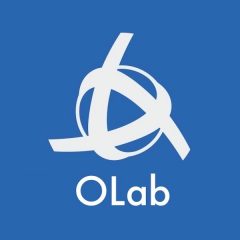Not only do we have cases available in both official languages for Canada (French and English), we also have cases written in a wide variety of other languages including Greek, Romanian, Farsi and even Klingon!

The page designer in OLab3 places very little restriction on what web designers can insert into them. OLab4 has reduced these restrictions even further, including right-to-left languages and multibyte characters.
Translating pages between languages is no more difficult than translating a Word document. We did explore automatic translation but found that the quality and effort required for correction did not make this worthwhile with the simplistic approach that we took. Because the text within each Node is simple HTML formatting, collaborating groups can easily explore such internationalization tools.
The interface for OLab3 has been designed with i18n infrastructure in place and so it could be converted to a francophone interface. Canada is a bilingual country so this question has been raised on many projects. However, we have found so far that the interface for OLab3 is sufficiently accessible that francophone authors are generally happy to work with its original interface. OLab4 can have much more sophisticated i18n compliance incorporated into it, if there is a demand for this.

The TTalk hybrid approach that we have taken to simple natural-language-processing (NLP) is another example of a service that makes it easy to adapt existing cases. A limitation of many virtual patients is that the learner is always choosing from pre-determined choices but there are situations where the case author wants to present a question that requires free text entry. While this is easy to capture, it is not easy to interpret and many different approaches have been tried, some of which are very costly. Even with the advent of chatbots, which are very flexible, it typically takes 2-3 months to plan and program the natural language and decision tree. This does not necessarily translate easily into another language as chatbots are variable in their acceptance of idiom. Our TTalk approach, described here, is much more flexible and retains this flexibility between languages and disciplines. We have also shown that the TTalk functionality is scalable and cost-effective.
The CURIOS video mashup service also assists in making materials that can be adapted to many purposes and languages. Video production is expensive, especially if a lot of post-production services are required. CURIOS circumvents that by providing segmentation of existing YouTube videos, either your own or a third-party’s. The same video can be segmented in different ways for different audiences and levels of learner, without having to touch the original content. CURIOS can also apply an secondary sound track. We have found at times that the video content is great but there is annoying guitar music as a background, or that the video was created in another language entirely. CURIOS allows the author to apply a second sound track and to vary the volume level of either the primary or secondary sound track. This makes it very easy to overlay a francophone or anglophone (or other) narrative, no matter the original language of the video.

